North East
A Visit To Mayong: The Black Magic Capital Of India
Nabaarun Barooah
Mar 09, 2025, 11:28 AM | Updated Jul 01, 2025, 09:26 AM IST
Save & read from anywhere!
Bookmark stories for easy access on any device or the Swarajya app.
Mayong, a picturesque village nestled along the banks of the Brahmaputra in Assam, has long been associated with the arcane.
For centuries, it was shrouded in mystery, feared as the ‘Land of Black Magic,’ where people allegedly vanished into thin air, transformed into animals, or wielded supernatural powers. The very mention of Mayong invoked awe and trepidation, and its reputation kept outsiders at bay.
However, over the years, this enigmatic land has undergone a significant transformation. Today, the same mystical traditions that once inspired fear have evolved into practices of healing, making Mayong a hub for alternative medicine.
History of Mayong
The origin of the name Mayong remains a subject of speculation. Some believe it derives from the Sanskrit word Maya, meaning illusion, while others trace it to the Dimasa word Miyong, meaning elephant, a nod to the region’s past as a habitat for these majestic creatures.
Mayong is deeply embedded in Assamese folklore and ancient Hindu mythology. References to its mystical powers can be found in the Mahabharata, where it is believed that Hidimba, the second wife of Bheema, belonged to the Kachari Kingdom. British East India Company records mention that the Kachari king was referred to as Hidimbesvar, linking the kingdom’s history to Bheema and Hidimba’s son, Ghatotkacha.
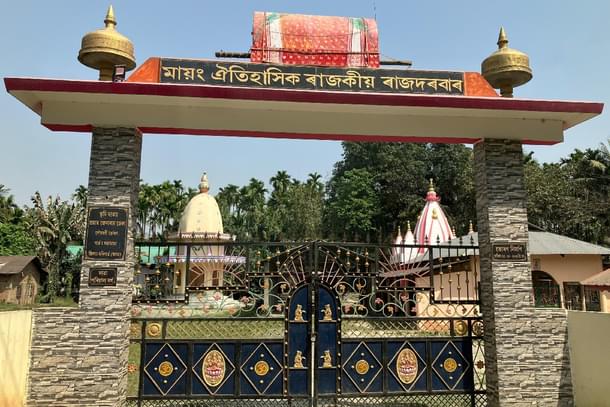
Historical manuscripts like the Bongsawali Goid chronicle how Sunyat Singha from Maibong founded the Mayong kingdom in 1624 CE, claiming descent from Ghatotkacha. Some believe that Ghatotkacha inherited his magical prowess from Mayong itself. Today, the 40th king of Mayong, a nominal head, still asserts his lineage from this legendary warrior.
Legends of Mayong’s dark arts are not confined to mythology but extend to historical events. In 1337 CE, Emperor Muhammad Shah’s formidable army of 1,00,000 horsemen, sent to conquer the Ahom kingdom, is said to have mysteriously disappeared within the forests of Mayong—never to be seen again.
Even the mighty Mughal Empire feared this land. The Alamgir Nama records that when Aurangzeb ordered General Raja Ram Singh to invade Assam, he hesitated, not just due to the formidable Ahom army but because of the infamous witchcraft practiced in Mayong. As history tells it, Ram Singh’s forces suffered a crushing defeat, with few escaping alive.
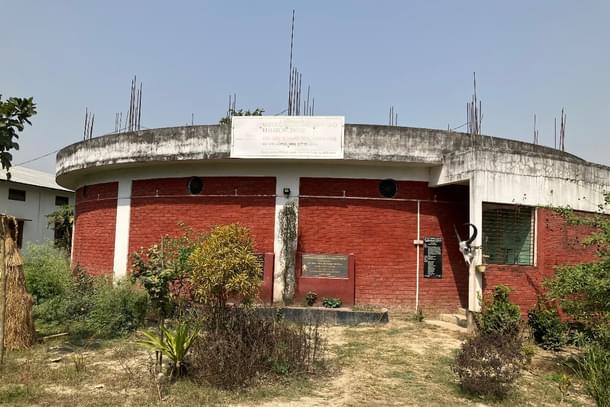
The Mayong Village Museum and Research Centre gives one a profound insight into Mayong’s mythical past. Established by the Indian National Trust for Art and Cultural Heritage, Garda Henkel Stiftung, Germany, and the Nath Yogi Development Council, the museum preserves the village’s rich heritage of magic and sorcery. Exhibits include ancient idols of deities, ritualistic bowls, stands, old photographs, and traditional weapons.
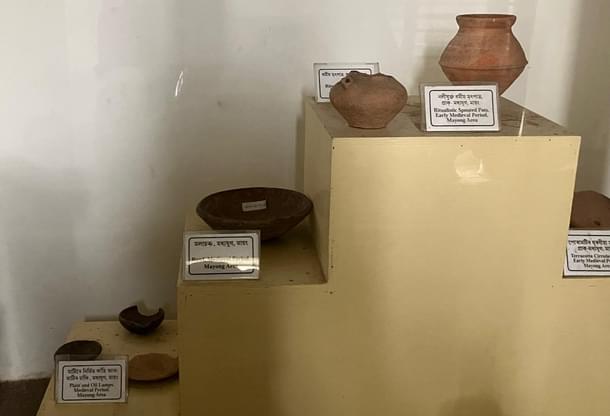
Among the most striking displays are two massive Dakhors, sacrificial machetes once used in human sacrifices. According to belief, these sacrifices were made to Lord Indra, and the blood of those sacrificed was consumed to retain and enhance magical powers. Mayong remains one of the rare places in Northeast India where Indra worship has been recorded.
A significant section of the museum is dedicated to magico-medical artifacts. Items on display range from mundane elements like rocks, mango seeds, and creepers to more ominous ones such as rattlesnake heads, tigress vagina, and owl hearts.
Old manuscripts containing magical mantras are carefully preserved, offering insight into the spells and rituals once practiced by the village’s Tantrics.
The New Face of Mayong
While black magic no longer dominates daily life in Mayong, its legacy has not been entirely abandoned. Instead, the village has reinvented itself, shedding its once-feared image to embrace a new role as a center for alternative healing.
The tantric practitioners of old, once labeled as sorcerers, have transformed into revered healers known as "Bez" or "Oja." These individuals employ ancient mantras, rituals, and herbal remedies to treat ailments ranging from broken bones to chronic diseases.
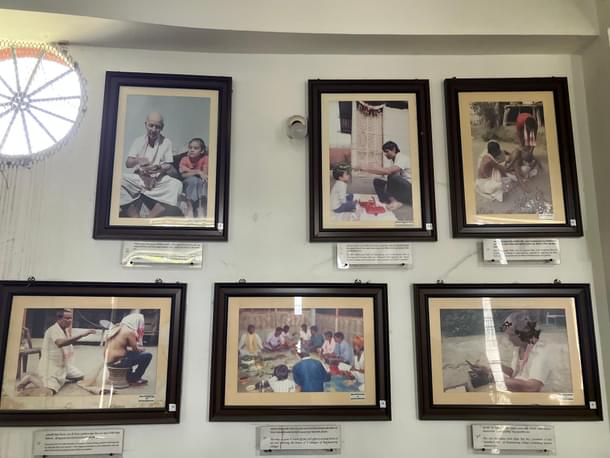
Unlike conventional medicine, the healing traditions of Mayong do not rely on scientific explanations. Instead, they blend spiritual chants, holistic touch, and plant-based treatments that have been passed down through generations. Villagers and even outsiders now seek out these traditional healers, finding solace in their age-old remedies.
Though modern science may remain skeptical, the effectiveness of these practices continues to be validated by those who have experienced relief.
While exploring the village, a signboard caught the my eye: "Available—Vashikaran, Mohini-Kabas, and treatment of venereal disease." Intrigue led me to the home of a Bez, Khongeswar Kalita.

When asked whether magic is real, Kalita responded, “Magic is sadhana (spiritual practice). It is not meant for public display. Today, we primarily use magic for healing, employing the Tantric method.”
Kalita elaborated on his healing abilities. “We provide treatment for various ailments. Most people first seek help from doctors. But when medical treatment fails, they turn to us. Recently, a patient with a fractured leg was advised amputation after 48 days of failed treatment. He came to me, and I gave him a mantra-infused creeper to tie around his ankle. Within days, the fracture healed. We Tantrics provide relief when all else fails, even for gupta rog (secret diseases) like infertility and sexual disorders.”
Kalita attends to patients on Mondays, Tuesdays, and Saturdays. His visitors come not only from neighboring villages but also from major cities like Guwahati and Dibrugarh.
Another prominent Tantric in Mayong is Prabin Sakia Bez. His residence, adorned with a modern gateway featuring Radha-Krishna imagery, stands out. Outside, cars line up, and inside, patients wait for their turn in an organized manner, much like a conventional medical clinic. A notebook at the entrance records names in order of arrival.
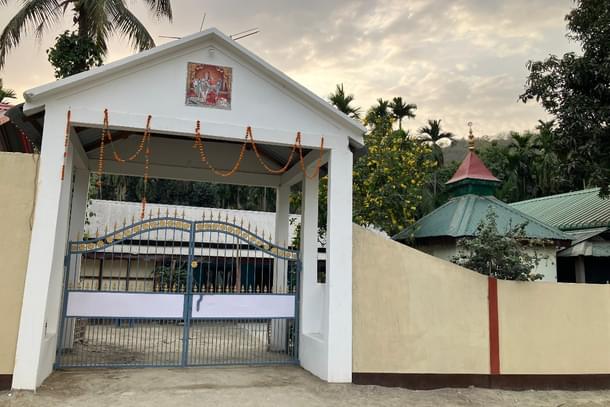
Sakia’s reputation extends beyond Assam. Patients travel from distant metro cities like Mumbai and Delhi, and even from international locations. One such patient, Béatrice (name changed), had traveled from Paris seeking relief for chronic back pain.
Sakia had provided her with a mantra-infused creeper to tie around her waist. “Allopathic treatment has too many side effects,” she said. “This remedy works miraculously without any.”
Beyond Healing: The Power of Black Magic
Kalita also spoke about another aspect of his practice: curing black magic. “There are two kinds of magic: Ku Mantra (evil magic) and Su Mantra (magic for good). A true Tantric knows both. We use Su Mantra to remove the effects of Ku Mantra.”
He recounted a recent case where a woman suffered from unexplained stomach pain. “Her medical tests showed nothing. I discovered she was a victim of black magic and cured her.”
Kalita mentioned, “We also use magic to find thieves. By chanting mantras over a bowl, we can make it move on its own and guide us to the thief. Many villagers have benefited from our magic.”
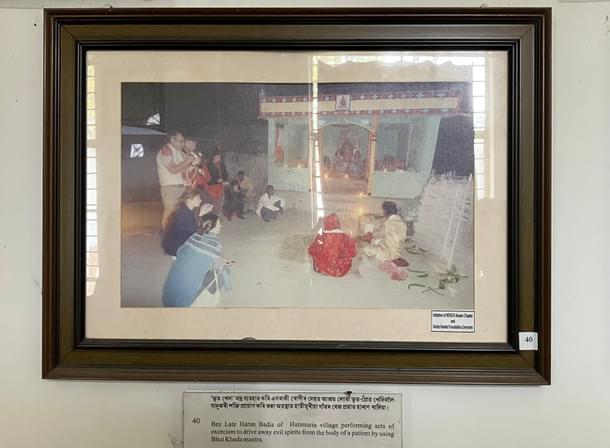
When I asked him about the signboard outside his house, Kalita explained, “Vashikaran is a form of magic used to resolve disputes between couples, and is best performed on Tuesdays and Saturdays. For Man Mohini, we chant a mantra over oil, rub it on our forehead, then transfer it to our partner’s forehead to rekindle love. Using Khel Mohini, we resolve conflicts among family members and people in society. A mantra-infused tamul-paan (betel leaf and areca nut) can make someone favor you instantly. It always works.”
Another powerful form, Raj Mohini, is said to be used by politicians. “We prepare an item made from nine dhatus (alloys), crafted by a maker who must follow strict rules—he cannot speak, spit, or break other taboos. Whoever wears it cannot be harmed.”
My mind shifted to the museum which had documented accounts of Tantrics in the past possessing extraordinary powers: controlling tigers through mantras, performing exorcisms, and even turning invisible.
When I excitedly asked if such abilities still existed, Kalita laughed and said, “Yes, we can use Luki Mantra to become invisible. There’s also Nidra Mantra, which can put you to sleep instantly, and Agni Mantra, which can set things on fire. When I was learning, I once tested it on a tree. It worked, and I quickly reversed it to avoid harm. Trees are also creations of God.”
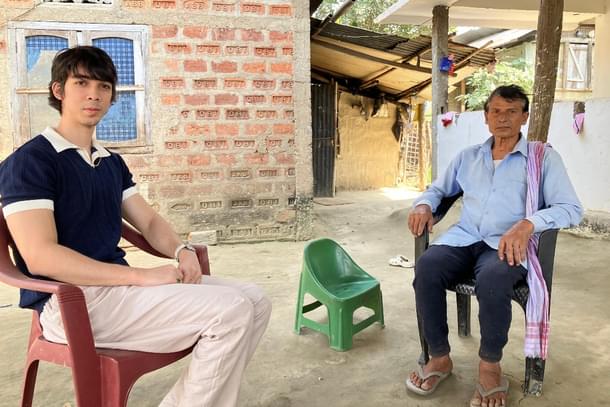
I was fascinated about magic and how one becomes a magician.
Kalita shared his journey to becoming a Tantric. “I started 45 years ago, when I was 20. My father was a Bez but passed away before I was born. I wanted to study, but financial hardships meant I only studied till Class 3. Then, I sought knowledge of tantra-mantra. Elders told me, ‘Tantra is creepers, Mantra is chants—together, they create magic.’ I was initiated and began my sadhana (spiritual practice) of Krishna and Rudra in Naamghars. Today, we do not give deeksha (initiation) easily, as magic can be misused.”
Is Magico-Medicine Legal?
In February 2024, the Assam government enacted the Assam Healing (Prevention of Evil) Practices Bill, aiming to curb magical healing and other occult practices deemed harmful. The bill criminalizes such acts, making them non-bailable and punishable with up to five years in prison and a fine of up to ₹1 lakh.
The government stated that the legislation was necessary to prevent deceptive and dangerous healing practices that pose risks to both physical and mental health. However, traditional healers like Khongeswar Kalita remain defiant.
“The British tried and failed,” he asserted. “The government cannot regulate us. Our traditions will continue.”
This reflects the deep-rooted cultural and spiritual significance of these practices in Mayong, where belief in magic is not just a profession but a way of life.
Last year, the Government of Assam, in fact, organised Mayong Indrajal Magic Festival on August 18 to show the village's unique mystic heritage. Local magicians from Mayong showcased their crafts and there was a performance by renowned magician Jadu Samrat Bikram.
Mayong remains a land where the boundaries between myth and reality blur. While the fear of black magic has faded, the legacy of sorcery lives on through alternative healing and Tantric rituals. Visitors come seeking cures, knowledge, and a glimpse into a mystical past that refuses to be forgotten.
Despite modernisation, Mayong still retains its aura of mystique. The elderly villagers continue to whisper tales of ancestors who possessed powers beyond human comprehension. However, the dark fear that once loomed over the land has given way to curiosity and admiration.
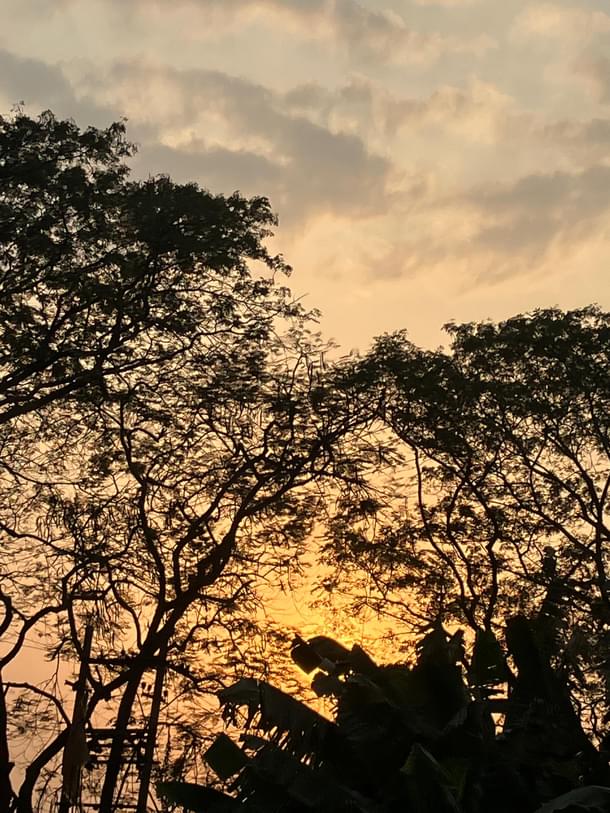
Whether one believes in magic or not, Mayong’s stories continue to captivate, leaving a lasting imprint on those who venture into its enigmatic depths.





